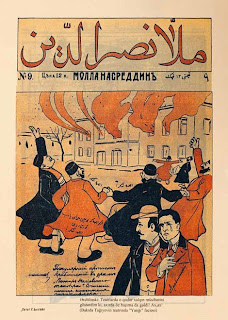 My Bulgarian artist friends are remarkably patient about my
passion for the work of their dead compatriots. And I should feel guilty that
my purchases, for the most part, do not help existing painters survive or
nurture new talent. I say “for the most part” since my collection does include
about 30 contemporary works – mainly realist. Three artists in particular
caught my eye early on –
My Bulgarian artist friends are remarkably patient about my
passion for the work of their dead compatriots. And I should feel guilty that
my purchases, for the most part, do not help existing painters survive or
nurture new talent. I say “for the most part” since my collection does include
about 30 contemporary works – mainly realist. Three artists in particular
caught my eye early on –
Juliana Sotirova, an incredibly talented, productive and versatile young woman
from whom I have bought some 12 paintings. These include a specially-commissioned one of my father which she did from a black and white photograph I gave her. I was stunned with the uncanny likeness when she revealed it to me.
She has a variety of favourite themes - old houses; African scenes; still-lives. I will try in future posts to lead with some of her paintings I love looking at.
Milcho Kostadinov’s more impressionistic take on run-down
Sofia and Plovdiv buildings charmed me from the beginning – with their soft greys and small bursts
of colour.
Recently he has moved to boats, nudes and the sea.
Recently he has moved to boats, nudes and the sea.
Angela Minkova is the last of the trio whose work has always attracted me – with its creativity and humour.
She concentrates on aquarelles (a lot on the theme of Queen Mary at Balcik) and on fantastic small sculptures made from a variety of materials eg bone and feather.
Two people in Sofia are responsible for what (little) I know about the contemporary scene - Yassen Golev of Konus Gallery (reference in previous post) and Vihra Pesheva of Astry Gallery. They are lovely people – full of passion and integrity. Yassen is also an artist – a couple of whose works I have already shown on this blog.
Vihra organises special exhibitions in her tiny gallery –
and it is there I was first introduced to the work of the trio I have spoken
about above.
And also where I purchased my first “non-realist” works from two Veliko
Tarnovo artists Natasha Atanassova
and her partner Nikolai Tiholov.
It was also in the Astry Gallery that I met Tony Todorov who does amazing pieces which are growing on me. I particularly like the
painting 3 minutes 16 seconds into the video.
And it was in Astry too that I was privileged to meet an old giant of Bulgarian painting Vassil Vulev – in his 80s - and it was three of his 1980s aquarelles I bought.
Finally I have to confess that this is one of the first Bulgarian paintings I bought (way back in 2008) - at the open-air market at Alexander Nevsky Church. By Violetta Stanoeva. Interesting that it was symbolic! And with all the appropriate symbols. But more than a touch of kitsch
How one’s tastes change!






.jpg)










